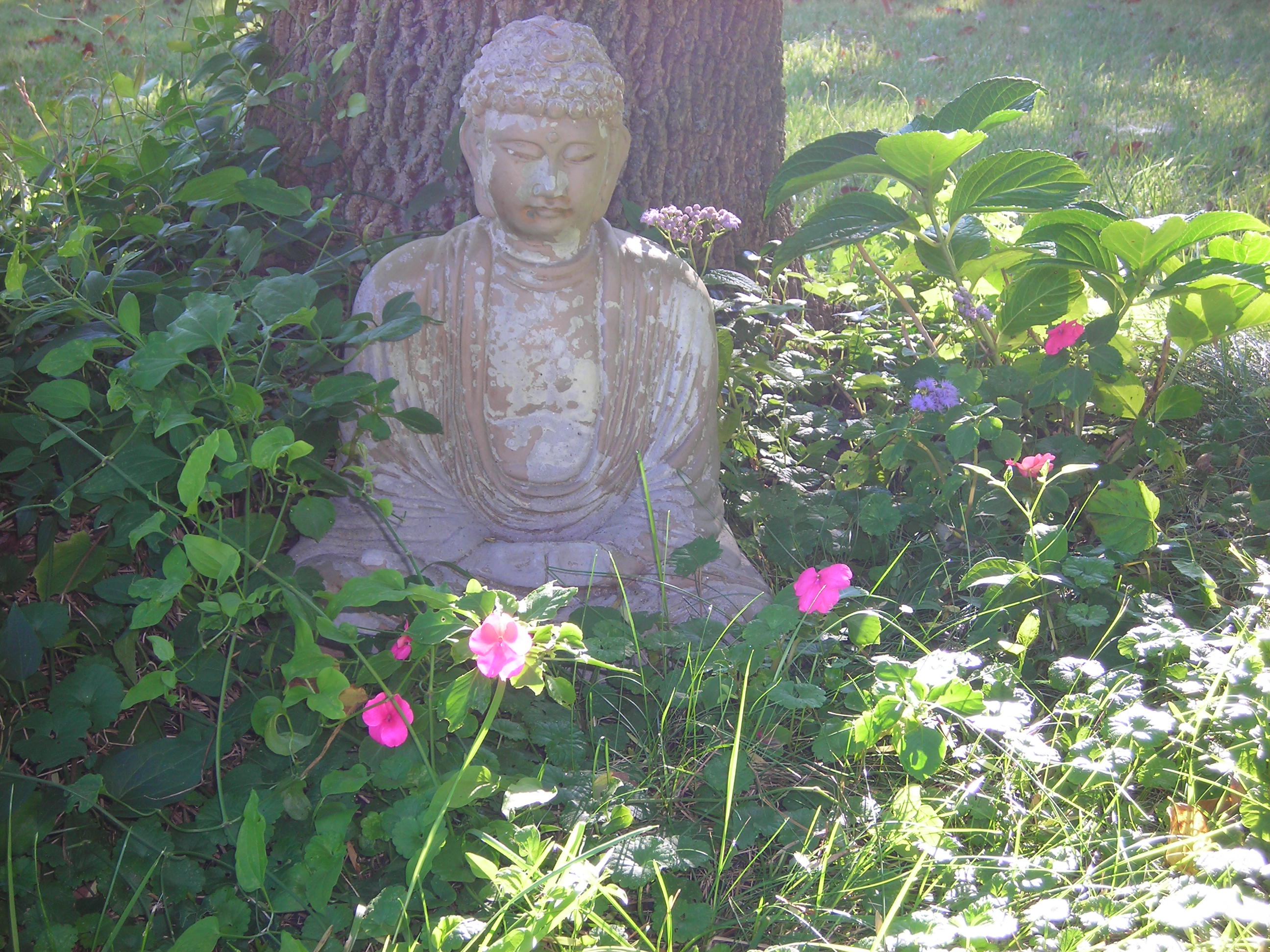Good morning!
Today is the equinox, a time of equal day and night and balanced heat and chill,
thus called Higan (彼岸), Other Shore or Nirvana. We celebrate it with all buddhas,
past, present, and future. Japanese people consider deceased ancestors to be
hotoke-sama (仏様), respectable buddhas, as they are in the other world
beyond karmic transmigration, samsara. Of course it is better to become a buddha
while alive, enjoying unconditioned peace, nirvana, and unsurpassed awakening,
anuttara samyak sambodhi.
We could still see the brilliant beautiful full moon in the clear cool autumn sky
this morning. I walked in the dense dewed grass to harvest greens for our sesshin
meal. When we started sitting, I saw the reflected moonlight moving into the window
and passing through it. It is only in this point of place and time that the full moon
reflection is on this floor. Our life moment is like this, with specific scenes in specific
space and time. Basho saw the full moon going around the pond throughout the
night and made the following haiku:
The renowned moon,
I went around the pond
Throughout the night.
Meigetsu-ya
Ike-wo megurite
Yomosugara
名月や
池を巡りて
夜もすがら
Basho must have enjoyed the clear cool full moon reflected in the pond, moving with
the moving of the reflection of the moon. We may see only the reflections on the
wooden floor or water surface. Dogen could see the real full moon, representing the
Buddha mind/heart, and also the true Buddha heart/mind. He appreciated the big
bright full moon in the broad beautiful sky throughout the night exactly 760 years
ago, making his last waka poem just a fortnight before passing away:
Even in the autumn, when
I’d expect to see it again,
I could not have slept
With the moon of tonight.
Mata minto
Omoishi tokino
Aki-danimo
Koyoi-no tsuki-ni
Nerareyawasuru
又見んと
思ひし時の
秋だにも
今夜の月に
ねられやはする
Our life is also like this, with specific peace and awakening or without it – maybe for
the whole life. Depending on our specific situations and sincerity, we can encounter
the Awakened Way, more difficult and precious than embodying human karma and
rare, like a blind turtle sticking its head into a hole of a floating log in the wide open
ocean. All beings are karma heirs – so to speak blind turtles, and humans are more
evolved – so to speak blind turtles sticking their heads into the dark holes further.
Because of the darker holes and horrors, humans try hard to be rid of them –
so to speak splitting open the log and opening their eyes, seeing stars, the sun,
scenes of the world clearly, saved from karma samsara and suffering. Because of
the bubble barriers and bondages, humans strive hard to return to the original
holy harmony, health, and happiness, savoring amrita, ambrosia of immortality –
limitless light, life, liberation, like the ocean from bubbles.
We have the equinox sesshin now. Sesshin (摂心/接心) is embracing or engaging
in detaching our ordinary mundane karma-machine minds of ordinary beings
(摂心) and touching or tasting the extraordinary supramundane holy-harmony
hearts of the Buddhas (接心). The former is protecting our doors – sense and motor
organs, i.e., karmas. The latter is putting the Awakened Way into the practice of
nirvana (windless of karmas) and bodhi (witness of awakening).
9/22/13
Note: “Protecting our doors (dvāra-gutta/gupta, Pali/Sanskrit)”
is also often compared to retracting sense organs like turtles retracting
their head, limbs, etc.
“Witness (vijjā/vidyā) of awakening (bodhi) is compared to waking up
from long night of nescience (delusion, dreadful dreams).

